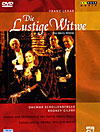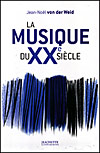|
Lehár: Die Lustige Witwe
Dagmar Schellenberger, Rodney Gilfry, Ute Gfrerer, Rudolf Hartmann, Piotr Beczala
Chorus and Orchestra of the Zurich Opera House, Franz Welser-Möst, conductor
Arthaus DVD 100451 (125 min)
       
 Call me a traditionalist – this Helmuth Lohner-Rolf Langenfass production of Die lustige Witwe from Zurich Opera is a total delight. Operetta as a genre just doesn't lend itself well to radical reinterpretations – witness the abominable mess of a Die Fledermaus by Hans Neuenfels a few seasons ago. Thankfully, there is no deconstructionist social commentary in this Merry Widow, just lots of frothy, silly, sexy fun. The sets and costumes are suitably lavish and sumptuous, but without the heaviness that can sometimes weigh down these elaborate productions. In fact, the best thing about the Zurich production is not the singing but the lively staging, enhanced by excellent supers and terrific dancers from the Zurich Opera Ballet.
The singers are chosen not so much for their beautiful voices – although the singing is respectable enough – as for the way they look. Compared to recent productions at the Met and San Francisco with superannuated stars, the Zurich forces are much younger. Heading the cast is the appealing Hanna of Dagmar Schellenberger. She has a rather limited voice with a very tight top, but sure is easy on the eye. Partnering her is American barihunk Rodney Gilfry, who is a fine actor but is unremarkable vocally. Gilfry exudes an easy athleticism that suits the staging well, although his Danilo is more of a Yankee boy-next-door than a Central European dandy. The secondary couple features a saucy, buxom Valencienne in Ute Gfrerer, whose pretty soubrette timbre is near ideal. Piotr Beczala, with his pencil moustache and slicked-back hair, makes a cardboard figure of Camille. Herbert Prikopa's Njegus managed to be more funny than annoying in this speaking role. Act Three is one long divertissement that sometimes can become tedious and heavy-handed, but with dialogue cut to a minimum and clever choreography, it almost seems short. Conductor Franz Welser-Möst shows that he can have fun too, presiding over the proceedings with champagne-lightness. In the curtain calls, Njegus takes the baton and leads a reprise of the final Can-Can sequence, with Welser-Möst now on stage, kicking up a storm with the rest of the cast!JKS
Published in Vol. 11 No. 1 of La Scena Musicale
Publié dans le Vol. 11 No. 1 dans La Scena Musicale
 | 
|  | La musique du xxe siècle |  | Madama Butterfly |  | Don Quijote de la Mancha |  | Wagner: Die Walküre |  | Monteverdi: L'Orfeo |  | Haendel: Serse |  | Bach |  | Langgaard: Antikrist |  | Schuman Symphonies Nos 7 & 10 |  | Chostakovitch |
|




